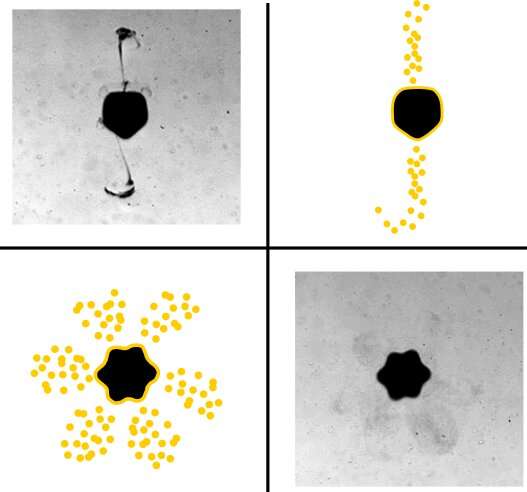Local release, assisted by an acoustic trap, of nanoparticles transported by microbubbles. Credit: Diego Baresch, Institut de mécanique et d'ingénierie de Bordeaux (CNRS/Université de Bordeaux/Arts et Métiers Paristech/Bordeaux INP)
Microbubbles are used every day as contrast agents in medical sonography, and are the subject of intense research for the delivery of therapeutic agents. There are a number of options available to manipulate these microbubbles, including the use of light and sound, although the potential of the latter remains largely unexplored.
In their research published on 22 June 2020 in PNAS, CNRS researcher Diego Baresch and Valeria Garbin, a researcher at the Delft University of Technology (The Netherlands), show that it is entirely possible to manipulate microbubbles through the use of 'acoustical tweezers,' a tool developed in 2016 that uses an acoustical beam to trap an object without contact.
In using these acoustical tweezers through layers of bio-mimicking and elastic materials, they successfully surpassed the limitations of optical tweezers, which cannot propagate through opaque media (such as in vivo tissue).
As a result, the scientists have opened the way for a broader application of acoustical tweezers in biology and biomedicine, for instance for the highly-localized, reproducible, and controlled delivery of medicine, or for in vitro tissue engineering using stem cells.
More information: Diego Baresch el al. Acoustic trapping of microbubbles in complex environments and controlled payload release. PNAS (2020). www.pnas.org/cgi/doi/10.1073/pnas.2003569117
Journal information: Proceedings of the National Academy of Sciences
Provided by CNRS
























